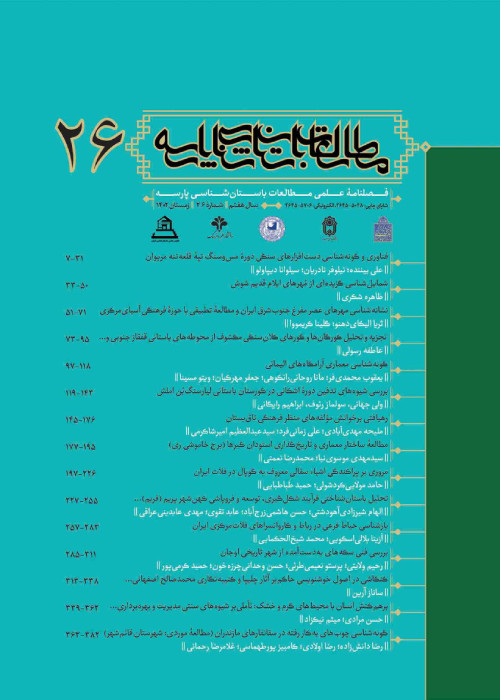Ancient Mining and Metallurgy Activities in Mazayjan District, Fars Province
Bavanat county, in Fars province, is very important in terms of mining activities, most of the active mines of Fars region are located in this county. Although various studies have been done by geologists in recent years in order to develop new mines as well as the role of mines in sustainable development, but in terms of archeology and ancient mining has been neglected, the only exception is the work of Emami and Bamshad in introducing only two mines. In 2015, an archaeological survey was conducted on Mazayjan and Markazi district which resulted in the identification of 200 sites from Neolithic to late Islamic period, in which 4 mines and 4 slag sites were identified. Since the survey of Bavanat county has not been fully done, more sites can be recognized by a comprehensive survey in this county by focusing on the identification of mines and sites related to ancient metalworking. The role of the ancient mining in the formation of settlements during different periods can also be investigated. The study of the relationship between natural resources and how they are extracted, used, exchanged and traded by ancient peoples will be fundamental and vital in archaeological studies. Recognizing the process of the metalworking industry will lead to clarification of the relationship between different stages in this cycle and a better understanding of the socio-economic effects of this industry in the context of cultural and historical developments in the Bavanat region. The current study tries to identify the evidence related to the cycle of metalworking industry by focusing on the results of the archaeological fieldworks in the Mazayjan district. What are the extracted metals and how was the extraction cycle? It seems that most of these mines were used to extract copper and iron metals. In this regard, the questions are about the background of the metalworking and mining industry in this area, what kinds of metal were extracted in this area, and how was the cycle of extraction and smelting process in the region, that appears the most of the mines have been exploited for copper and iron ore. Although little surface evidence has been found to date, a few pottery finds indicate the history of the Islamic and possibly Sassanid period.
- حق عضویت دریافتی صرف حمایت از نشریات عضو و نگهداری، تکمیل و توسعه مگیران میشود.
- پرداخت حق اشتراک و دانلود مقالات اجازه بازنشر آن در سایر رسانههای چاپی و دیجیتال را به کاربر نمیدهد.



